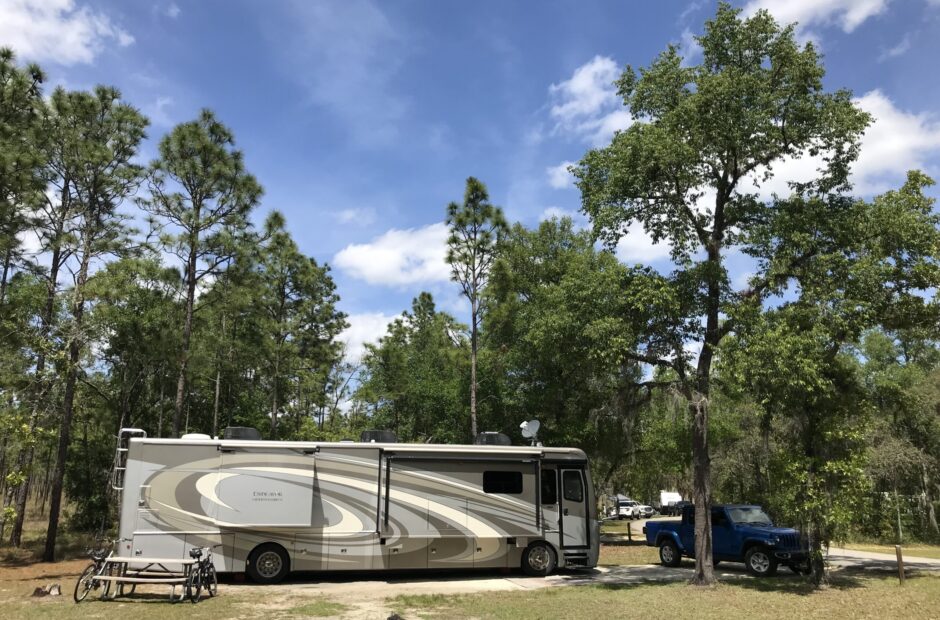Sampson State Park, Romulus, New York
Give thanks to the Lord, for he is good; his love endures forever. ~ Psalm 118:1
In case you were caught off guard, I changed the title to yesterday’s blog. I had made the note for that inspirational title, but forgot about it until I ran across it about a week later. Sorry for any confusion. 😊

(Good morning, Delilah!) : )
Yes, I know Samson doesn’t have a ‘p’ in his name . . .
but it sounded fun!

We didn’t attend a church service this morning. We were too achy, plus there weren’t any choices near us. Instead, we listened to a message by Dr. Mark Jobe, the 10th President of Moody Bible College who recently visited The Chapel in Green, our home church. He focused on a passage of the Old Testament that neither of us remember reading – Exodus 4:24-26. In it, he spoke about how “unfinished business” in our lives can hinder our service to the Lord. Things like harboring hate or bitterness, or ignoring God’s call to do something or go somewhere, or not apologizing to someone. Dr. Jobe encouraged us to pray on our heart condition and then rectify anything trying to hide there.
It’s Sunday afternoon, and still no bruise on my side. I don’t get it. A slight topple into soft mud and I sustain a huge bruise on my thigh, but blunt force trauma to my torso and . . . . nothing . . . . Things that make you go, Hmmmm . . . . At any rate, Blaine and I are still hobbling around.
Since we didn’t have the gumption or wherewithal to do much else, we rode our bikes to the Park’s Military Museum. It’s quite large! Everything in there was donated by veterans and it focuses on the years when the Park was used as a Naval and later, an Air Force base. Isn’t that wonderful? It was quite well done, as you’ll read/see a small portion of it. There were several really interesting things to learn as well. Enjoy the tour!

Along the way, we came across the Park’s cottages.This is as close as we could get without a reservation. The 2-bedroom ones are a mere $1,400/week. 
This is a picture of the 2-bedroom we found on an information board about the cottages.
Some cottage, huh?







plus I couldn’t believe how many men crowded onto that tiny platform.




On May 17, 1942, the War Department announced that a naval station would be constructed. Named after Palmyra native Rear Admiral William Thomas Sampson, the naval base facilities were constructed on 2,535 acres in 270 days! In its 3.5 years of operation a total of 411,429 recruits received their naval training, approximately 5,000 at any one time.
In March 1945, the Sampson Naval Station hospital was selected as the eastern tuberculosis center for Navy personnel. (the war ended in September 2nd) Starting on Sept. 15, 1945, Sampson was a “separation center” that processed more than 65,000 enlisted personnel out of active service.
The 2,500-bed Navy hospital was closed on July 1, 1946. The base then became the largest of three temporary colleges established in Upstate New York for veterans as part of the G.I. Bill. Between October 1946 and June 1949, Sampson College matriculated 7,500 students and more than 950 received two-year college diplomas.
In October, the Q Area of Sampson Hospital was transferred to Willard State Hospital to house 1,000 elderly patients.
Then, in 1950, it became an Air Force hospital with about 1,500 beds, making it the second largest Air Force hospital in the United States. Following its decommissioning as an Air Force hospital in 1955, it again was turned over to Willard State Hospital to be operated as Sampson State School. It housed developmentally disabled patients until its closure in late 1971.
Between mid-November 1950 and Feb. 1, 1951, the former Navy base facilities were rehabilitated at a cost of $30 million to become the Sampson Air Force Base. There also was $5 million in new construction. On Feb. 1, 1951, the first 300 trainees arrived; by the time of the base’s closure in 1956, more than 300,000 recruits had received training. At its peak, the Sampson Air Force Base had about 15,000 recruits, 6,000 instructors and 1,000 civilian employees, with an annual payroll of about $43 million.
There were several transformations of this property over the years – a school for veterans (men who returned home from the Korean War and wanting an education), a state mental health facility (known as the Sampson State School of the Willard State Hospital which housed 470 developmentally disabled male and female patients older than 16 and provided care for an additional 515 male mental patients in 1964), and briefly as the location of “Youth Town USA” (a camp of sorts for potentially delinquent boys that never really came to fruition).
It became a State Park in 1964.
You can learn the rest in pictures. 😊










They must’ve had a deadline to meet . . .
Total military – 2,335 (of which 1,177 were on the USS Arizona) and 68 civilians,
making the total 2,403.




Wait until you see why!
So wonderful!






Wonder if they’re still that regimented?







The boxes were roughly the size of Blaine’s hand.


Sign of the times, when everyone smoked.





Not only does it list what they had to eat for a week,
but it shows the cost, the number served, and the cost per person – just under $.64!
(that’s sixty-four CENTS!) Can you believe it??








Well, here it is!
Church service!!

but that doesn’t look like it would help much in a crisis – cracked glass notwithstanding.







As you’ll see, they didn’t have nearly as much.

















Wonderful job those volunteers did!





